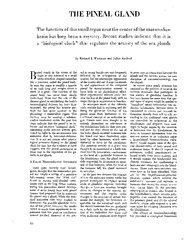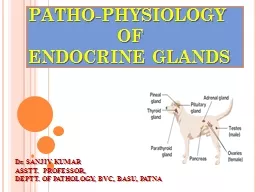PDF-THE PINEAL GLANDThe function of this small organ near the center of th
Author : kittie-lecroy | Published Date : 2015-07-28
PINEAL BODYCORPUS CALLOSUMCEREBELLUMPINEAL BODYCORPUS CALLOSUMTWO VIEWS of the human brain reveal the central position of thepineal body Section at top is cut in
Presentation Embed Code
Download Presentation
Download Presentation The PPT/PDF document "THE PINEAL GLANDThe function of this sma..." is the property of its rightful owner. Permission is granted to download and print the materials on this website for personal, non-commercial use only, and to display it on your personal computer provided you do not modify the materials and that you retain all copyright notices contained in the materials. By downloading content from our website, you accept the terms of this agreement.
THE PINEAL GLANDThe function of this small organ near the center of th: Transcript
Download Rules Of Document
"THE PINEAL GLANDThe function of this small organ near the center of th"The content belongs to its owner. You may download and print it for personal use, without modification, and keep all copyright notices. By downloading, you agree to these terms.
Related Documents














